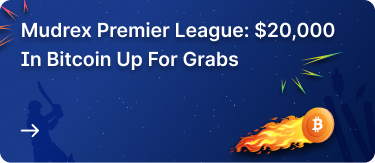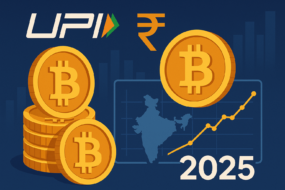The crypto market is constantly shifting, driven by unique mechanisms that shape price movements and investor sentiment. One such mechanism is token unlocks—an important event that can influence supply, demand, and overall market dynamics of a specific cryptocurrency project. Understanding token unlocks can help you spot market trends of a particular cryptocurrency more effectively. In this blog, we’ll explore what token unlocks are, why they matter, how they impact the market, the different types of vesting schedules, and where you can track upcoming unlocks.
What Are Token Unlocks?
In the world of cryptocurrencies, token unlocks refer to the release of previously locked or restricted tokens into circulation. These tokens are often held by project teams, early investors, advisors, or other stakeholders and are subject to a vesting schedule or lock-up period. Once the lock-up period ends, the tokens are “unlocked” and can be freely traded, sold, or transferred.
These events are a common practice in crypto projects, especially those that raise funds through private sales, initial coin offerings (ICOs), or initial exchange offerings (IEOs). They are designed to align the interests of stakeholders with the long-term success of the project while preventing immediate sell-offs that could destabilize the token’s price.
How Does a Token Unlock Work?
Token unlocks are typically governed by smart contracts, which are self-executing programs on the blockchain. These contracts automatically release tokens according to a predefined schedule. Here’s a step-by-step breakdown of how token unlocks work:
1. Token Allocation: During the project’s initial funding phase, tokens are allocated to various stakeholders, such as the team, investors, and advisors. A portion of these tokens is often locked.
2. Lock-Up Period: The locked tokens are subject to a vesting period, which can range from a few months to several years. During this time, the tokens cannot be traded or sold.
3. Unlocking Schedule: The smart contract specifies when and how the tokens will be unlocked. For example, tokens might be released in monthly or quarterly installments after a certain period.
4. Release of Tokens: Once the lock-up period ends, the tokens are unlocked and become available for the holders to use as they see fit.
Why Do Projects Have Token Unlocks?
1. Reducing Immediate Selling Pressure: By locking tokens, projects prevent early investors or team members from selling large amounts of tokens immediately after launch, which could crash the token’s price.
2. Aligning Incentives: Token unlocks ensure that stakeholders remain committed to the project’s success over the long term. If tokens are locked, stakeholders have a vested interest in seeing the project grow.
3. Building Trust: Transparent token unlock schedules demonstrate a project’s commitment to fairness and long-term planning, which can build trust among investors.
The Impact of Token Unlocks
They can have significant implications for a cryptocurrency’s price and market dynamics. Here’s how they impact the market:
- Market Volatility: When a large batch of tokens is unlocked, holders may opt to sell, increasing supply and putting downward pressure on the token’s price. Anticipation of these unlocks also fuels volatility, as traders adjust their positions based on expected market movements. While this can pose risks, it also creates trading opportunities for those who time the market effectively.
Case Study: Aptos (APT) Unlock Impact
On June 12, 2024, Aptos (APT) released 11.31 million tokens—2.59% of its circulating supply—valued at approximately $102.69 million. The distribution was as follows:
• Foundation: 1.33 million APT
• Community: 3.21 million APT
• Core Contributors: 3.96 million APT
• Early Investors: 2.81 million APT

This major unlock triggered a sharp price decline, with APT dropping 25.74%, from $8.023 to $6.991 over the next 30 days, demonstrating how token unlocks can significantly impact market sentiment and liquidity.
- Investor Sentiment: The announcement of an upcoming token unlock can influence investor sentiment. If the market perceives the unlock as a negative event, it may lead to a sell-off even before the tokens are released.
- Long-Term Stability: While token unlocks can cause short-term price fluctuations, they can also contribute to long-term stability by ensuring a gradual release of tokens into the market.
Types of Crypto Locking Mechanisms
There are several mechanisms used to lock tokens in the crypto space. Each has its own unique features and use cases:
1. Vesting Schedules: This is the most common locking mechanism. Tokens are released gradually over time, often in monthly or quarterly installments. Vesting schedules are typically used for team members and advisors.
2. Time-Locked Wallets: Tokens are stored in wallets that are programmed to release funds only after a specific date or event. This is commonly used for investor tokens.
3. Staking Locks: Some projects require users to lock their tokens in staking contracts to earn rewards. These tokens are unlocked after the staking period ends.
4. Governance Locks: In decentralized autonomous organizations (DAOs), tokens may be locked to participate in governance decisions. This ensures that voters have a long-term stake in the project.
Platforms to Identify Token Unlocks
For investors, staying informed about upcoming token unlocks is essential. Fortunately, there are several platforms that provide detailed information about token unlock schedules:

1. Tokenomist: A dedicated platform that tracks token unlock schedules for various projects. It provides data on unlock dates, the number of tokens being released, and the impact on circulating supply.

2. CoinMarketCap: While primarily a price-tracking platform, CoinMarketCap also provides information on token unlocks for select projects.

3. CryptoRank: This platform offers insights into token unlocks, vesting schedules, and other key metrics for crypto projects.

4. Messari: A comprehensive analytics platform that includes data on token unlocks, among other metrics.
Key Takeaways
Token unlocks are an integral part of the cryptocurrency ecosystem, serving as a mechanism to balance supply, align incentives, and build trust. While they can create short-term volatility, they also contribute to the long-term stability and success of a project.
Token unlocks are just one of the many factors that can influence the market, but they play a significant role in shaping the trajectory of a project. Therefore, whether you’re a hodler, trader, or simply a crypto enthusiast, keeping an eye on such events will help you better understand the dynamics of the projects you’re invested in.





